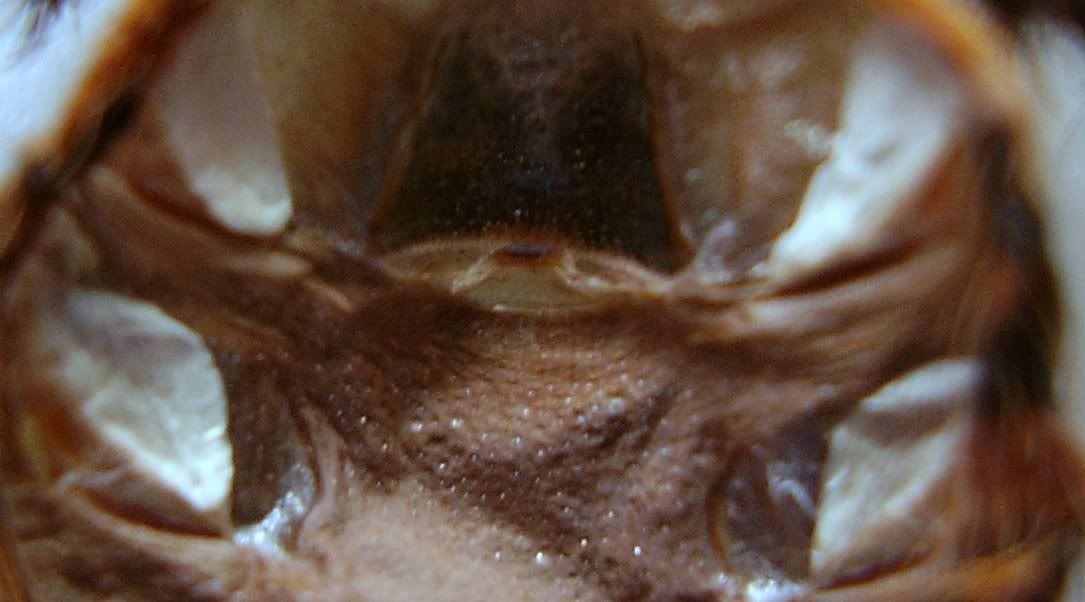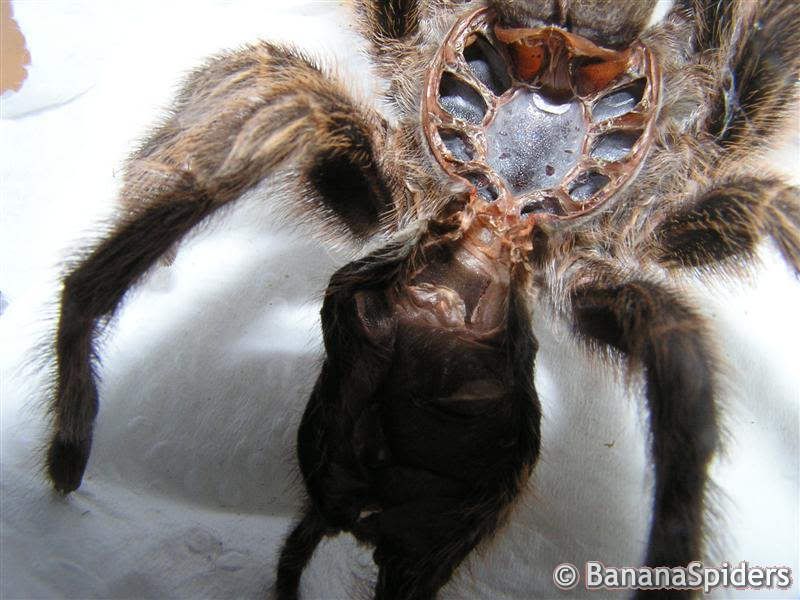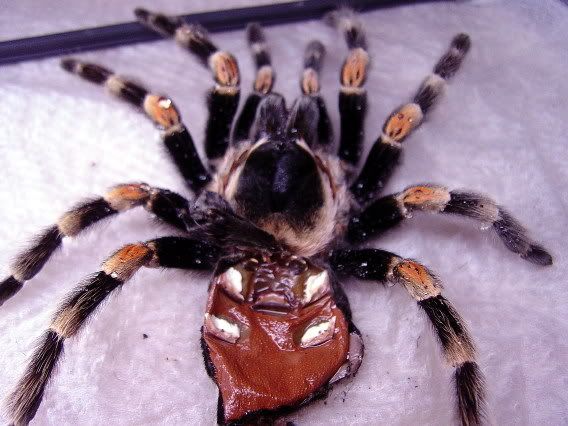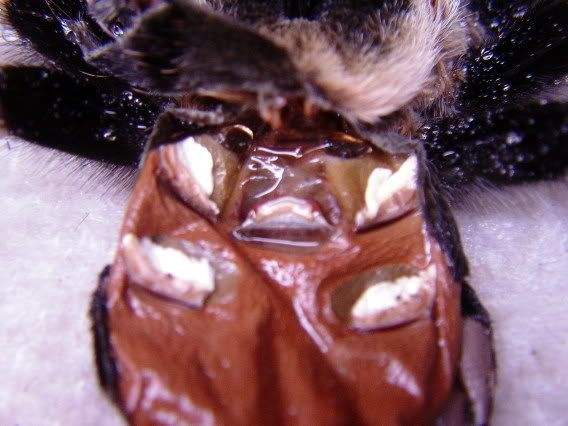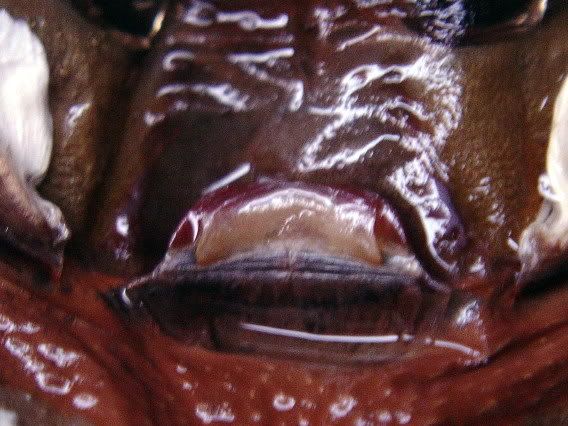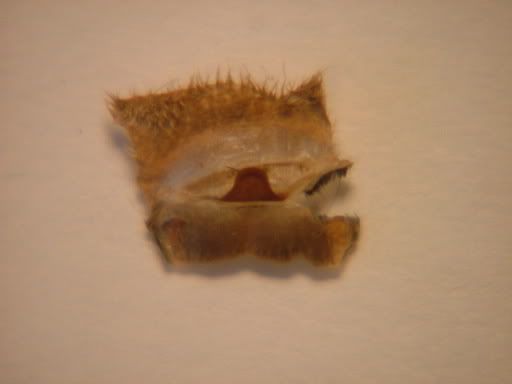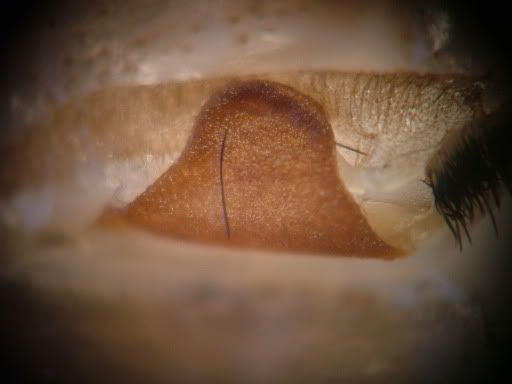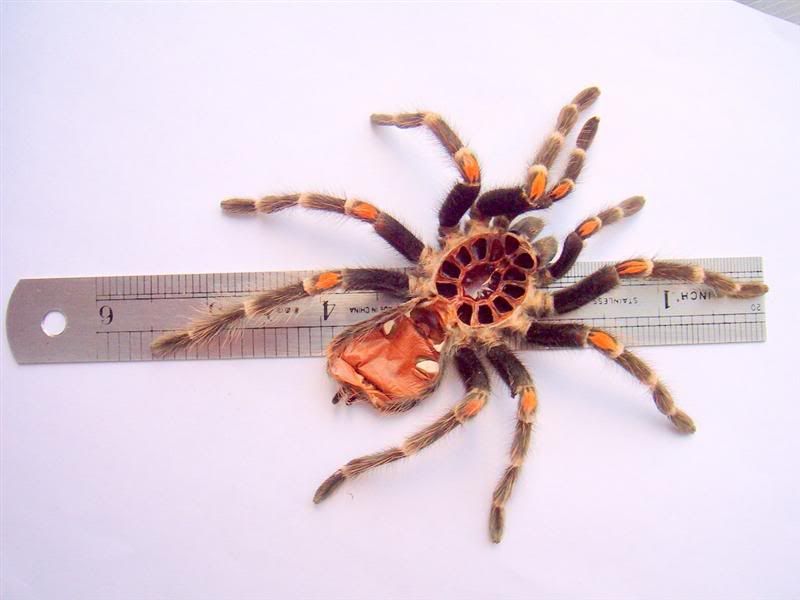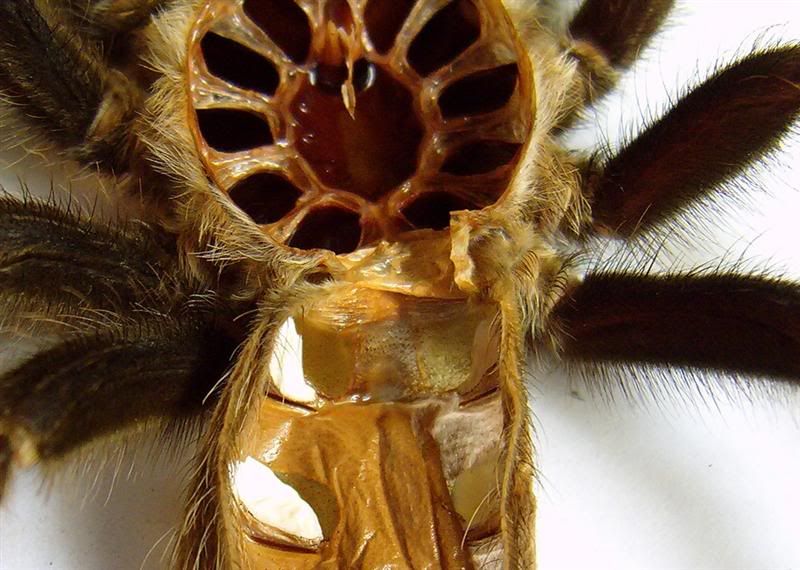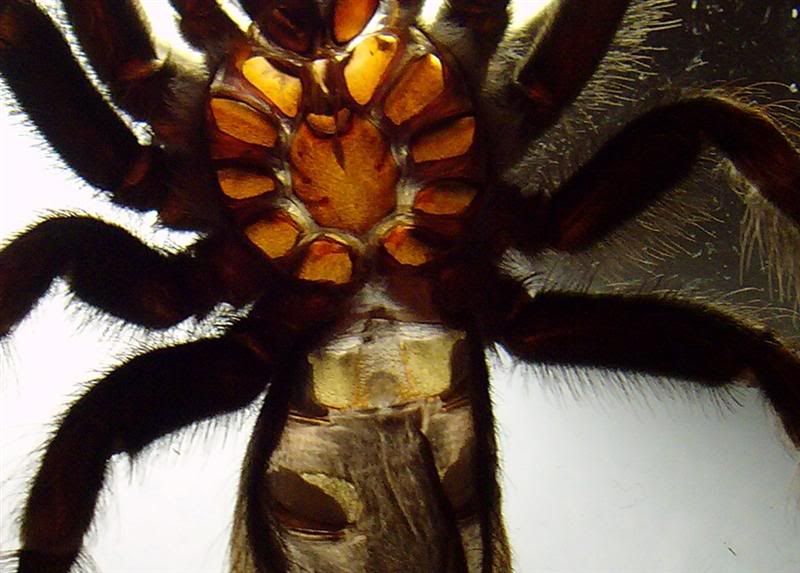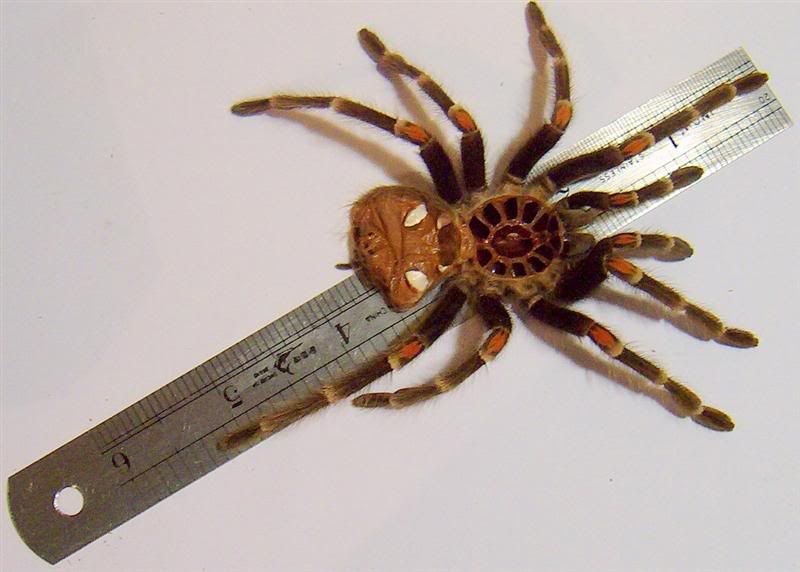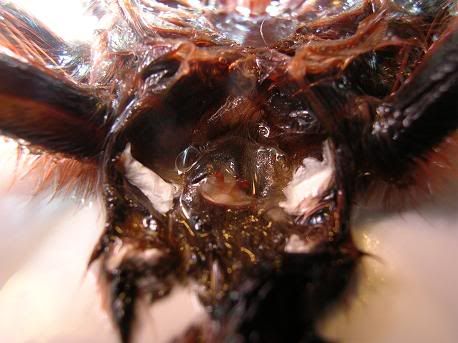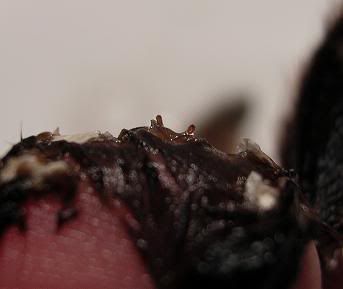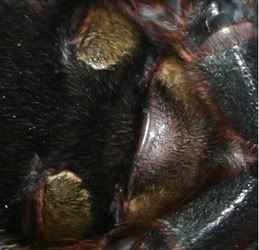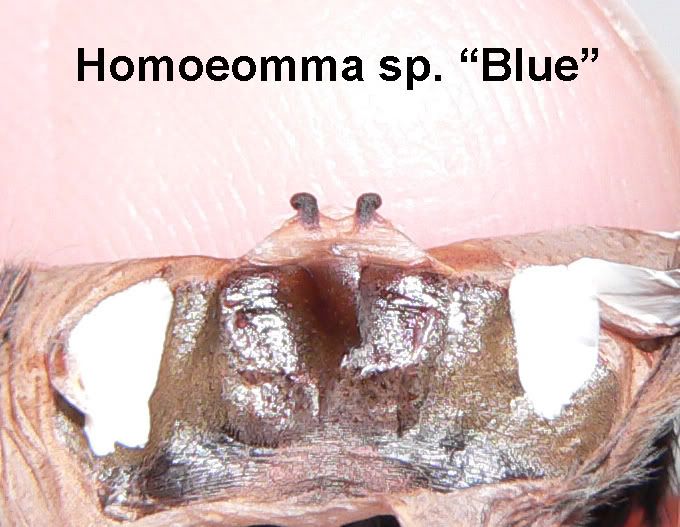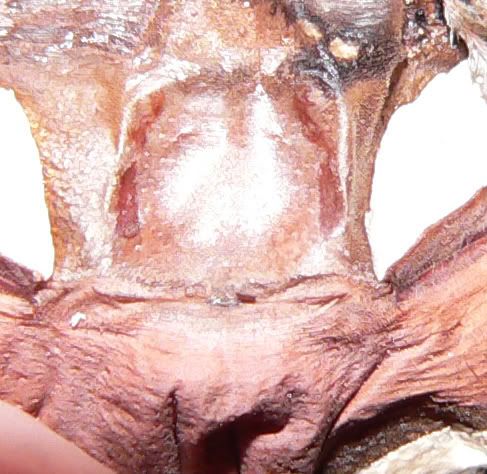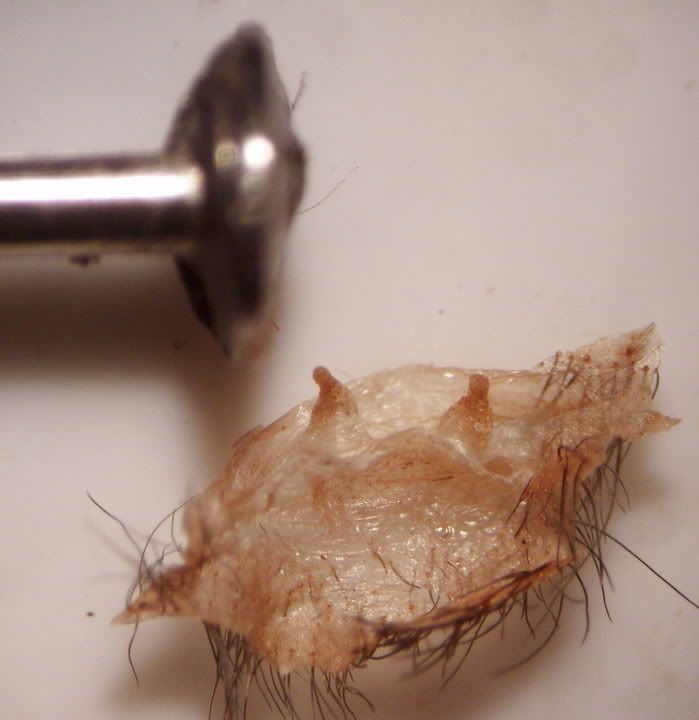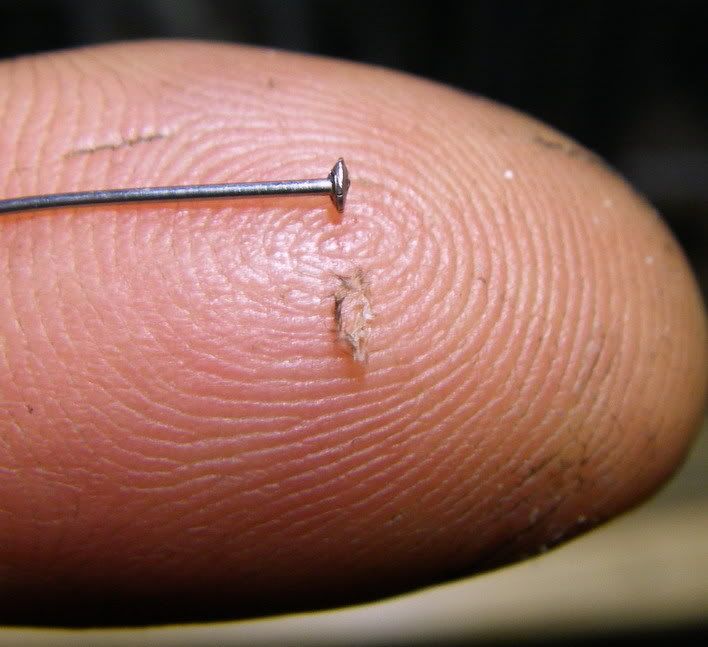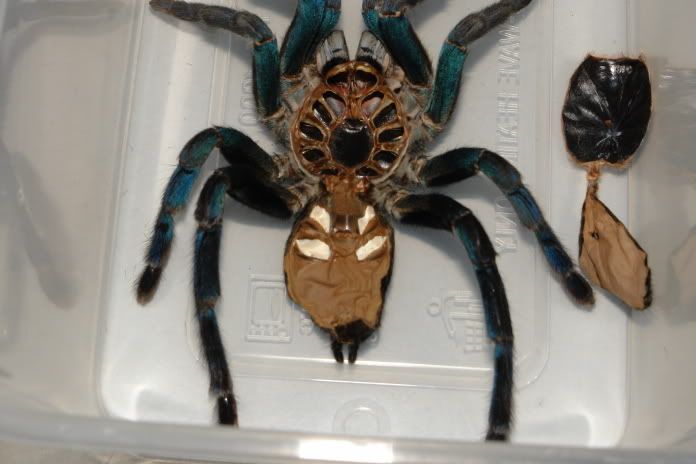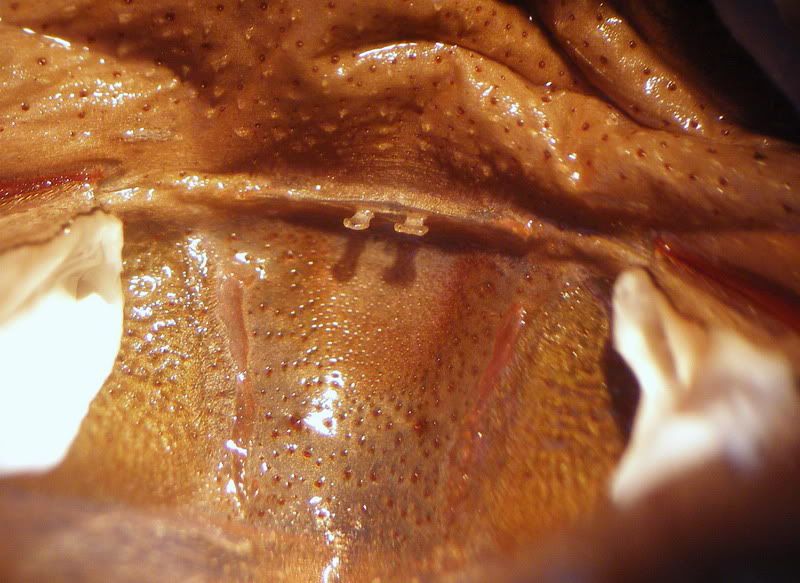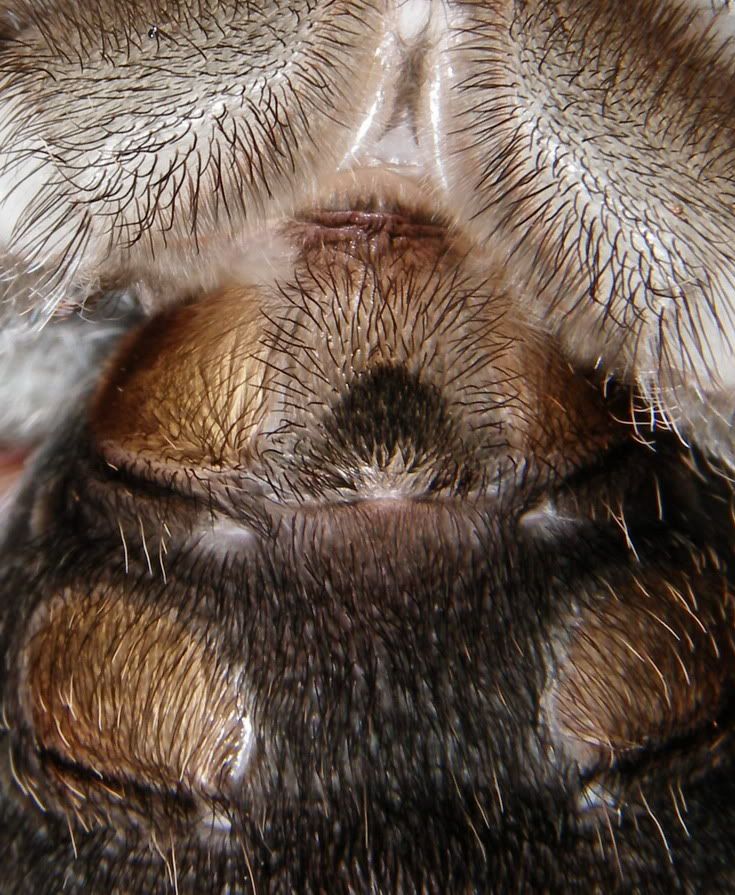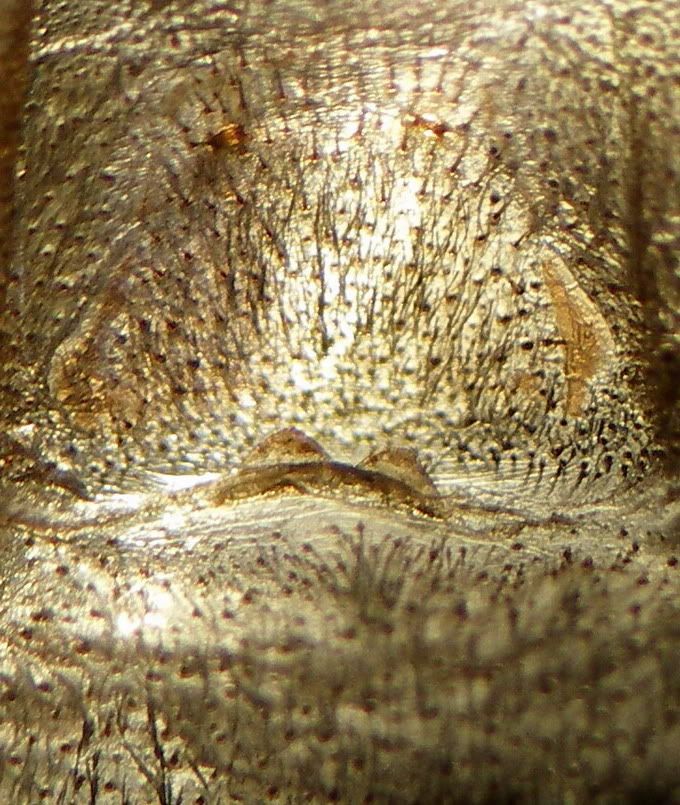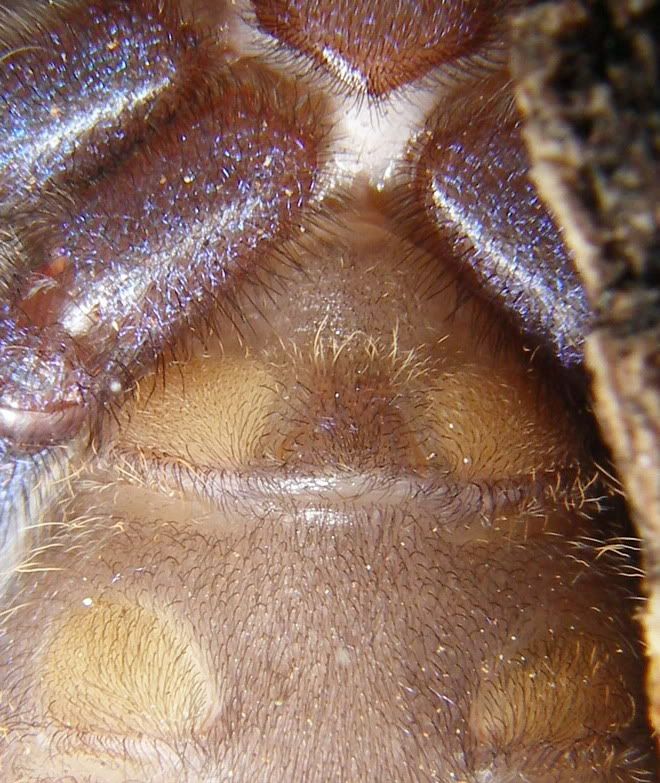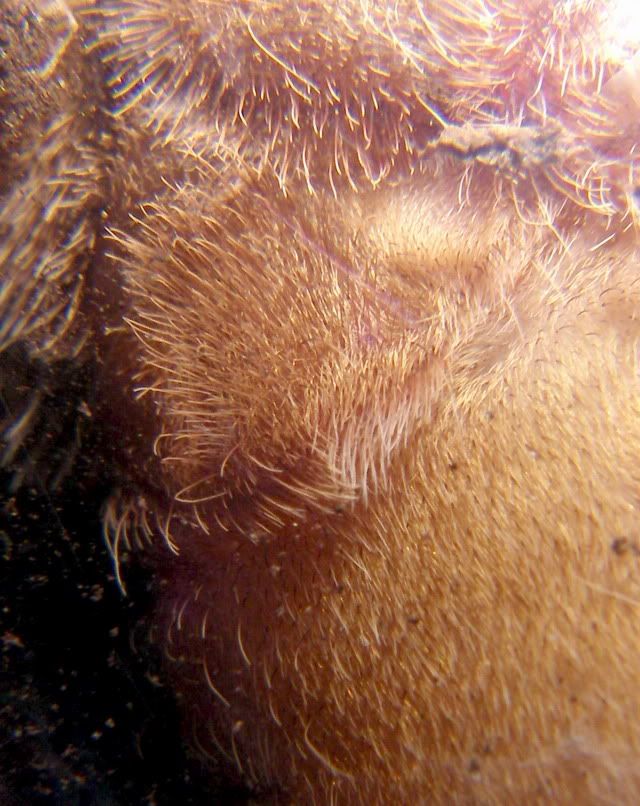- Joined
- Feb 25, 2005
- Messages
- 1,384
Well, think of it this way. How can you tell what sex a baby human is? If there were a thread on that, there would be pics on males because they are the most obvious. So a lack of the ahem, distinctive factor would suggest a female. It is exactly the opposite here, with females having the "thingy" and males not. So what you need to look for is the absense of any of the different female flaps.metzgerzoo said:Well, this is all peachy, however, all of you are forgetting one little MAJOR thing, not all tarantulas are female AND it's just as important for those new to the hobby to also be able to know and detect the epiandrous fusillae as well.
edit: Oh, i forgot to mention, DO NOT post pics of naked babies here

